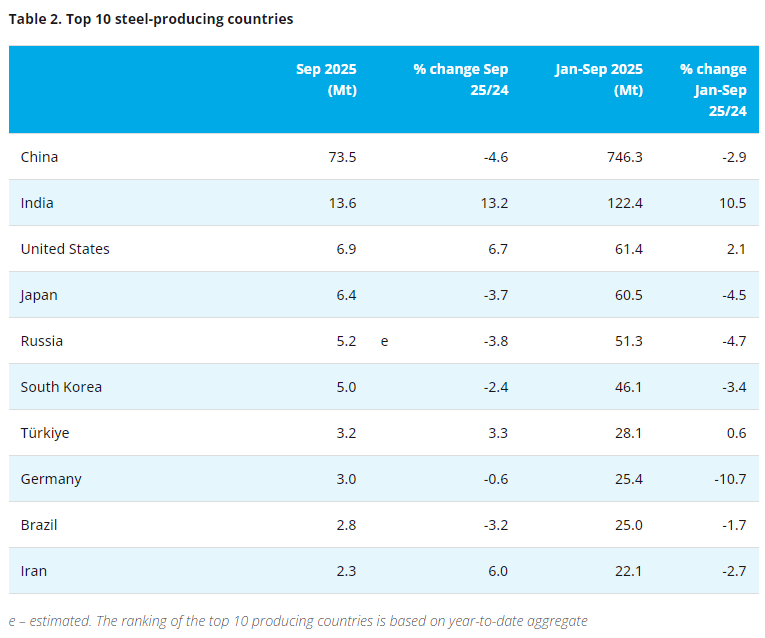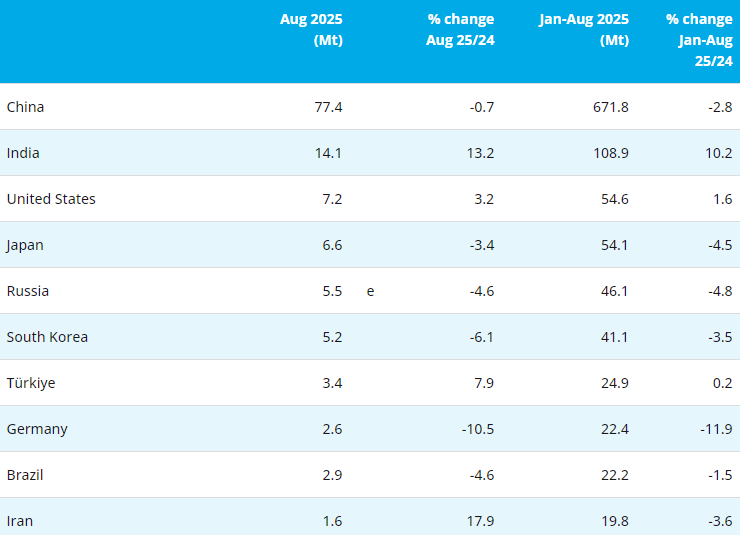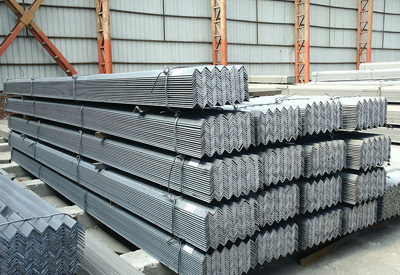[ferro-alloys.com]Vale, the Brazilian mining giant built on supplying the world's steel mills with iron ore, is now betting on the electric vehicle (EV) revolution to turn its nickel division around.
"We believe in this revolution to come," Chief Executive Fabio Schvartsman told analysts at the company's investor day presentation in New York this week.
The use of nickel in lithium ion batteries will translate into at least 500,000 tonnes of extra demand by 2025, according to Vale, which is planning to play a leading role in meeting the additional need for high-grade metal.
However, to do so, it will have to turn around its troubled New Caledonian operations, a task described by Schvartsman as "maybe our biggest challenge".
It will also have to gamble that Chinese players led by the Tsingshan steel group don't make the technological breakthrough that would allow them to convert nickel ore straight into battery-grade nickel.
That would undermine demand for the sort of high-purity material, so-called Class I nickel, that Vale specialises in producing.
Still waiting for Goro
Vale had been hoping to attract a partner for its Vale New Caledonia (VNC) operations but evidently without success.
It will now go it alone.
What was originally known as the Goro project has been strewn with operational problems ever since it came on stream, two years late, in 2011.
In theory, it's perfectly positioned to ride the EV revolution, producing the right sort of nickel for processing into batteries with a by-product stream of cobalt, another hot battery metal.
In practice, Vale has never fully mastered the high-pressure-acid-lead (HPAL) technology used to convert ore to nickel oxides.
The original plan envisaged a three-year ramp-up to nameplate capacity of 58,000 tonnes of nickel in oxide and hydroxide. In 2017, its sixth year of operation, it managed 40,000 tonnes.
Alas, even that good run hasn't lasted into 2018.
Production of what Vale terms "finished nickel products from VNC source material" fell 17 percent in the first nine months of the year to 24,200 tonnes and VNC reported an operating loss of $42 million in the third quarter itself.
Vale management is undeterred.
It has, according to Eduardo Bartolomeo, head of the company's base metals division, commissioned a "very detailed study to know exactly why we can't achieve our nameplate capacity."
The study found that there is no "insurmountable" bottleneck in the plant and Vale's goal is now to invest $500 million to get the plant operating at 50,000 tonnes per year of nickel products over a two- to three-year time horizon.
It's not the first time senior Vale management has vowed to fix Goro, but the new-found incentive is the coming electric vehicle revolution.
The decision to double down on New Caledonia is "very simple", according to Schvartsman. "We will need this operation in order to supply the market because of the growth in the consumption for batteries."
Tsingshan challenge
That is, unless Chinese steel giant Tsingshan can make good on its ambitions to build an Indonesian plant that can convert nickel ore straight into battery-quality material.
Since Tsingshan's original announcement in September, the London Metal Exchange (LME) nickel price has fallen from just under $13,000 per tonne to a current $11,000.
Nickel's shiny electric vehicle premium has been blown away by the prospect of Indonesia's abundant nickel ore production, currently exclusively destined for the stainless steel sector, being diverted into meeting battery demand.
Such an eventuality could also impact severely demand for the sort of premium nickel product currently produced by Vale.
No-one quite believes Tsingshan's stated intention of building a plant to produce 50,000 tonnes per year of contained nickel at a cost of $700 million with first production next year. Particularly since it is proposing to use the same HPAL technology that has challenged Vale and other producers in recent years.
But based on Tsingshan's track record of single-handedly propelling Indonesia into the top ranks of stainless steel producers in super-quick time, no-one's quite sure either.
Vale's Schvartsman conceded that "there is no question about the ingenuity of the Chinese" and that over time "this technology will become more competitive in their hands".
But not next year, nor in all likelihood the year after.
To build a plant that size, using that technology with that amount of investment "is totally impossible", Schvartsman said.
Tsingshan's September statement, according to Schvartsman, "is more an issue of communication – there isn’t anything real behind it."
"Just talk", agreed Bartolomeo, who noted it would take Tsingshan 18 months just to get a federal marine disposal licence. "They have the provisional licence but the rules are very strict".
Now a believer
This time last year, when Vale was actively looking for an investment partner in VNC, Schvartsman said it was a test of whether the market really believed that "nickel is something that is important for the future of EVs."
Would all the future promise "translate into someone who is eager to invest with us to have more nickel in the future"?
The apparent negative response is in all likelihood far more to do with Goro's problematic past performance than nickel's future prospects.
The metal seems on track to be an early winner in the materials competition for lithium batteries, partly at the expense of cobalt on price and supply stability grounds.
But the promise still lies largely in the future. Batteries only account for around 5 percent of total nickel demand.
Right now the price remains beholden to its traditional stainless steel drivers. Stainless production ran hot through the first part of this year but is cooling rapidly, an overlooked part of the recent price sell-off.
Nickel inventories, meanwhile, remain elevated. Visible stocks on the LME have been falling but there is a strong suspicion that part of the decline has simply reflected statistically hidden stock building along the supply chain.
Vale has around 60,000 tonnes of idled production capacity, taken off-line at the end of 2017 due to low prices.
That gives it plenty of optionality in lifting output as and when demand from the battery sector takes off.
Because one thing is for sure. Vale is now an official believer in the electric vehicle story.
To reap the full rewards, though, it needs to sort out once and for all its problem child, Goro, and keep its fingers crossed that Tsingshan's announcement is, for now at least, "just talk".
(Mining.com)
- [Editor:王可]



 Save
Save Print
Print Daily News
Daily News Research
Research Magazine
Magazine Company Database
Company Database Customized Database
Customized Database Conferences
Conferences Advertisement
Advertisement Trade
Trade















 Online inquiry
Online inquiry Contact
Contact

Tell Us What You Think